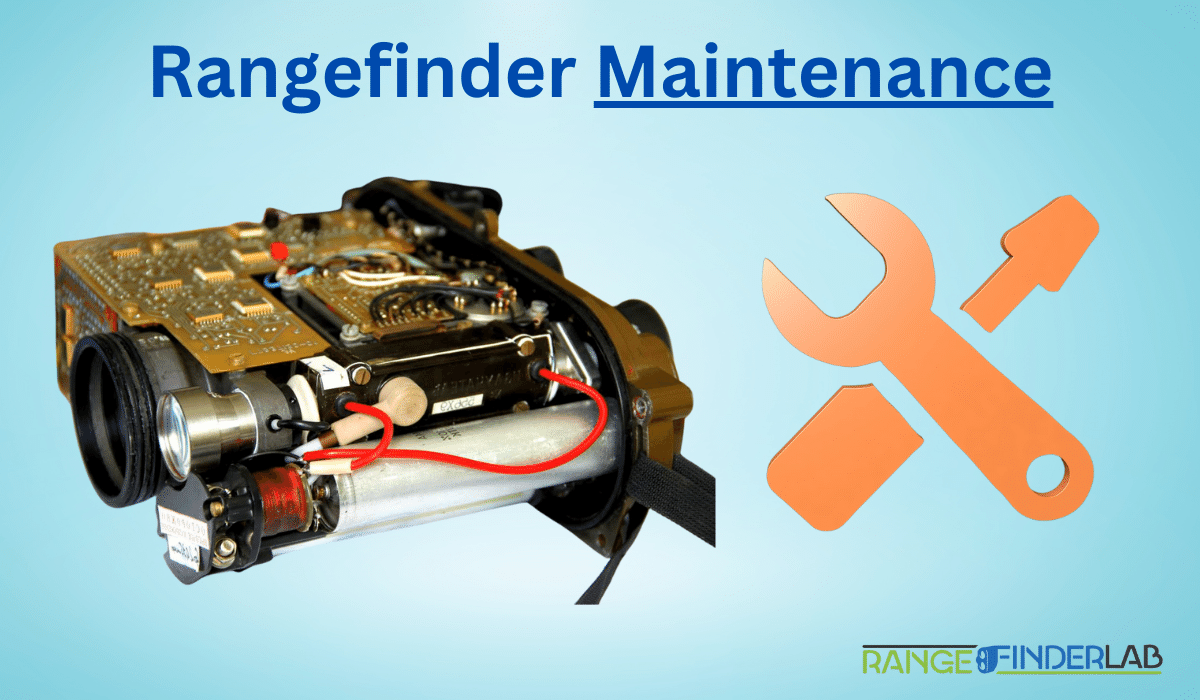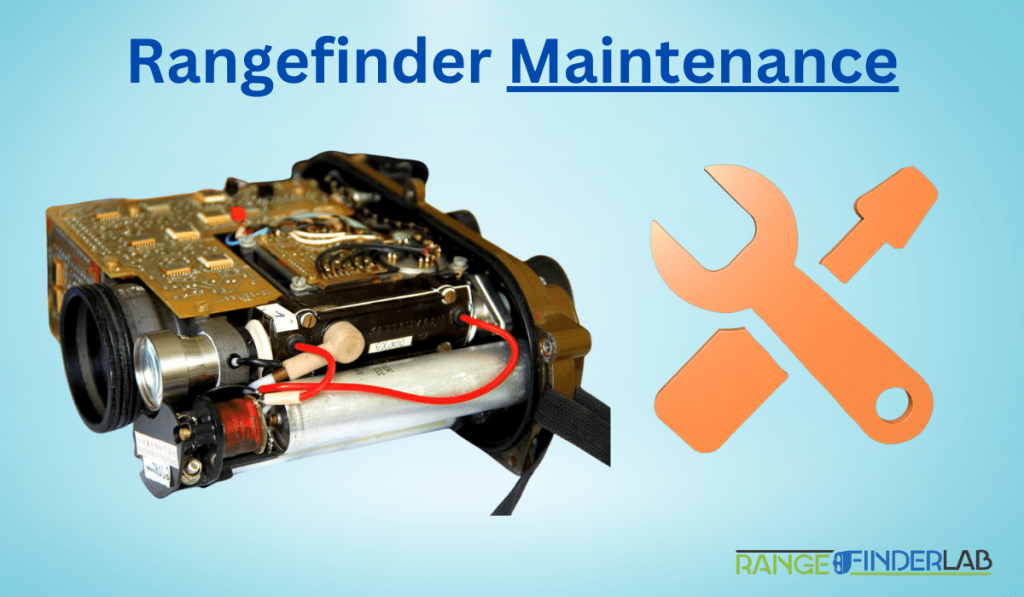

The importance of maintaining your rangefinder cannot be overstated. Regular maintenance keeps the device functioning at its best. Over time, factors such as dust, fingerprints, and exposure to the elements can affect its performance. The lens, being the eye of the rangefinder, requires special attention to maintain clarity and precision. The body, batteries, and other components also demand regular check-ups to prevent malfunction and wear.
This guide delves into the essential maintenance tips and tricks for your rangefinder. From routine cleaning practices to more advanced care, we will cover all the necessary steps to keep your device in top-notch condition. We’ll explore how to properly clean and store your rangefinder, manage battery life, and troubleshoot common issues. Additionally, we’ll look into when and how to seek professional servicing to ensure your rangefinder remains a reliable asset in your toolkit.
As we embark on this journey of rangefinder maintenance, remember that the little time and effort you invest in caring for your device will pay dividends in its performance and durability. Stay tuned for the upcoming sections, where we detail these maintenance practices, ensuring your rangefinder remains a precise and trusted tool in all your endeavors.
Table of contents
Understanding Your Rangefinder
To effectively maintain your rangefinder, it’s essential first to understand its basic components and the different types of rangefinders available, as each may have unique maintenance needs.
Essential Components and How They Work
A typical rangefinder, whether for golf, hunting, or other purposes, consists of several key components:
- Optical Lens: The lens is crucial for viewing and targeting. It usually has coatings to reduce glare and enhance visibility.
- Laser Emitter and Receiver (for Laser Rangefinders): These components emit a laser beam to the target and then receive the reflected beam, which is used to calculate the distance.
- Display Screen: Depending on the model, the screen displays the distance and sometimes other information, like battery level.
- Buttons and Interface: These are used to turn the device on/off, select modes, and measure distances.
- Battery Compartment: Houses the power source, typically lithium-ion or standard batteries.
- Exterior Housing: Protects the internal components from environmental factors.
Different Types of Rangefinders and Their Maintenance Needs
- Laser Rangefinders: These are popular for their precision and require careful lens maintenance to ensure clarity and accuracy. Keeping the laser emitter and receiver clean and unobstructed is also crucial.
- GPS Rangefinders: Common in golf, these require less maintenance in terms of optics but may need regular software updates and battery maintenance to ensure optimal performance.
- Optical Rangefinders: Less common and more traditional, these devices rely heavily on the cleanliness and condition of their optical components.
- Hybrid Rangefinders: Combining laser and GPS technology, hybrids require maintenance attention to both electronic (for GPS functionality) and optical components (for laser accuracy).
Understanding your rangefinder’s components and the type of rangefinder you own is the first step in proper maintenance. This knowledge helps apply the right maintenance techniques, which we will explore in the next section on routine maintenance practices.
Routine Maintenance Practices
Regular maintenance is vital to keeping your rangefinder in optimal condition. Here are some essential routine practices for cleaning the lens and body, battery care, and proper storage.
Cleaning the Lens and Body
- Lens Cleaning: The lens should be cleaned regularly with a soft, lint-free cloth. For stubborn dirt, use a lens cleaning solution or a little bit of isopropyl alcohol. Avoid touching the lens with your fingers, as oils from the skin can leave streaks.
- Body Cleaning: Wipe the rangefinder’s body with a dry cloth to remove dirt and debris. For tougher grime, use a slightly dampened cloth and dry it thoroughly. Avoid harsh chemicals or abrasive materials that can damage the rangefinder’s exterior.
Battery Care and Replacement
- Regular Checks: Regularly check the battery level and ensure it’s adequately charged for your activity. This is especially important for rangefinders in activities like hunting or golf, where a low battery could interrupt your game.
- Proper Charging: If your rangefinder uses a rechargeable battery, follow the manufacturer’s charging guidelines. Overcharging can reduce the battery’s lifespan.
- Battery Replacement: For rangefinders using disposable batteries, have a set of spare batteries on hand. Replace batteries as soon as you notice a decline in performance.
- Storage Considerations: If you’re not using your rangefinder for an extended period, remove the batteries to prevent corrosion or leakage inside the device.
Storage Tips to Prolong Life
- Avoid Extreme Temperatures: Store your rangefinder in a cool, dry place. Extreme hot and cold temperatures can damage the electronic components and the battery.
- Use Protective Cases: Store your rangefinder in a protective case to shield it from dust, moisture, and impact. Many rangefinders come with a custom case designed for this purpose.
- Moisture Control: If you’re storing the rangefinder for an extended period, consider using silica gel packets in the storage area to control moisture and prevent internal damage.
By following these routine maintenance practices, you can significantly extend the life and maintain the performance of your rangefinder. The following section will explore advanced care and troubleshooting tips to ensure your rangefinder’s longevity and reliability.
The Overlooked Aspects of Rangefinder Care
Delving into the world of rangefinder maintenance, subtle yet critical aspects are often overlooked. My insights focus on these nuances, emphasizing their importance in ensuring optimal performance and longevity of your device.
Often-Neglected Maintenance Aspects
- Regular Firmware Updates: Regular firmware updates are vital for rangefinders with digital components, like GPS models. These updates can improve accuracy and functionality and extend the device’s life. However, users frequently overlook them.
- Alignment Checks: Regular alignment checks are crucial for laser rangefinders. Misalignment can subtly occur over time, especially with regular use or after impacts. This issue is often neglected until significant accuracy problems arise.
- Soft Carrying Pouches: While complex cases are excellent for storage, using a soft pouch for field protection is often undervalued. A soft pouch can prevent dust accumulation and minor scratches, especially during active use.
- Moisture Management: Managing internal moisture is critical beyond avoiding water exposure. Silica gel packets in the storage case can prevent internal moisture buildup, a common cause of long-term damage.
The Role of Maintenance in Rangefinder Performance and Longevity
Regular maintenance plays a pivotal role in rangefinders’ performance and lifespan. Simple practices like lens cleaning can maintain optimal clarity for accurate measurements. Battery care ensures a consistent power supply, preventing unexpected failures during critical moments.
Moreover, the longevity of your rangefinder is directly tied to how well it’s maintained. Regular care can prevent common issues like lens fogging, battery corrosion, and general wear and tear. It’s a cycle of care – the better you maintain your rangefinder, the longer it will deliver accurate, reliable performance, ultimately saving you time and resources in the long run.
While essential maintenance is crucial, attention to these neglected aspects can make a significant difference. A rangefinder is an investment, and like any investment, its value is best preserved through diligent care and attention. Next, we will explore the necessities of professional servicing and recognizing when it’s required for your rangefinder.
Professional Servicing and When It’s Needed
While regular self-maintenance of your rangefinder is crucial, there are times when professional servicing becomes necessary. Understanding when to seek professional help and what to expect from such services can ensure your rangefinder remains in peak condition.
Identifying When Professional Servicing is Necessary
- Post-Impact Performance Issues: Professional servicing is recommended if your rangefinder has suffered a significant impact and you notice performance issues afterward, such as inaccuracy or failure to lock onto targets.
- Internal Moisture or Fogging: If you notice moisture inside the lens or persistent fogging that doesn’t resolve with standard cleaning, it’s a sign of internal issues that need professional attention.
- Software or Calibration Issues: For rangefinders with advanced features like GPS or ballistic calculators, software glitches or calibration issues beyond the scope of standard firmware updates require professional servicing.
- Prolonged Exposure to Extreme Conditions: If your rangefinder has been exposed to extreme environmental conditions, such as prolonged moisture, intense heat, or severe cold, a professional check-up can ensure no internal damage has occurred.
What to Expect from a Professional Service
- Thorough Inspection: A professional service typically begins with a comprehensive inspection of the rangefinder’s optical and electronic components.
- Cleaning and Calibration: To restore the rangefinder’s accuracy and functionality, expect professional-grade cleaning of all components, including lens and alignment calibration.
- Software Updates and Repairs: Technicians will update software for digital rangefinders and rectify glitches. They may also repair or replace any faulty hardware components.
- Advice on Future Care: Post-service professionals often advise on better care and maintenance practices specific to your rangefinder model.
- Warranty Check: If your rangefinder is under warranty, check the terms, as the manufacturer might cover some repairs.
Professional servicing is crucial to rangefinder maintenance, especially when dealing with complex issues or ensuring your device remains reliable for years. You can ensure your rangefinder continues functioning as a trusted tool by recognizing the signs indicating the need for such servicing and knowing what to expect. In the next section, we will answer some frequently asked questions about rangefinder maintenance to further guide you in caring for your device.
Frequently Asked Questions (FAQs)
How often should I clean my rangefinder?
Regular cleaning is recommended, especially after each use in dusty or outdoor conditions. The lens should be cleaned whenever you notice smudges or dirt.
What is the best way to clean the lens of my rangefinder?
Use a soft, lint-free cloth and, if necessary, a lens cleaning solution or isopropyl alcohol. Avoid using rough materials or touching the lens with your fingers.
Can I replace the battery, or need professional help?
In most cases, you can replace the battery yourself. Just make sure to use the correct type and follow the manufacturer’s instructions for installation.
Is it safe to use my rangefinder in the rain?
This depends on your rangefinder’s design. If it’s weather-sealed or waterproof, it should be safe. However, avoid exposing non-waterproof models to moisture.
How do I store my rangefinder when not in use?
Store it in a cool, dry place, preferably in a protective case. If storing for an extended period, remove the batteries to prevent leakage.
Can dropping my rangefinder cause internal damage?
Yes, dropping can cause misalignment or internal damage. If you notice any performance issues after a drop, consider professional servicing.
What should I do if my rangefinder gets wet?
Dry it off as soon as possible. If submerged or wet, consider having it checked by a professional to ensure no internal moisture damage.
Are there any signs that my rangefinder needs professional servicing?
Signs include inaccurate readings, difficulty locking onto targets, software glitches, or if the device has undergone severe impact or environmental stress.
Can I perform calibration checks on my own?
Basic calibration can often be done at home by following the manufacturer’s instructions. However, for complex issues, professional calibration is recommended.
How long does a rangefinder typically last with proper maintenance?
With proper care and maintenance, a good quality rangefinder can last several years, even up to a decade, depending on usage and handling.
Regular maintenance and proper care are vital to prolonging the life and ensuring the accuracy of your rangefinder. Should you encounter issues beyond primary care, don’t hesitate to seek professional servicing to maintain optimal performance.
Conclusion: The Importance of Regular Rangefinder Care
As we wrap up our comprehensive guide on rangefinder maintenance, let’s summarize the essential tips and reflect on the importance of regular care for these precision instruments.
Summarizing Key Maintenance Tips
- Routine Cleaning: Keep the lens and body of your rangefinder clean with a soft, lint-free cloth, and use appropriate cleaning solutions when necessary.
- Battery Management: To ensure a consistent power supply, regularly check and replace batteries and follow proper charging protocols for rechargeable models.
- Proper Storage: Store your rangefinder in a protective case in a relaxed, dry environment. Remove batteries if stored for extended periods.
- Regular Updates and Checks: Keep the software updated for digital rangefinders and perform routine checks for alignment and calibration.
- Professional Servicing: Recognize situations that call for professional servicing, such as post-impact issues or internal moisture, to address complex maintenance needs.
Final Thoughts on the Importance of Regular Rangefinder Care
Maintaining your rangefinder is not just about preserving its functionality; it’s about ensuring its reliability and accuracy when needed. Whether lining up a critical shot on the golf course, gauging distance for a hunt, or undertaking any activity where distance measurement is vital, a well-maintained rangefinder can be the difference between success and disappointment.
Regular maintenance extends the lifespan of your rangefinder, saving you money in the long run and providing peace of mind that your equipment won’t fail you in crucial moments. A small investment of time and effort pays dividends in performance and reliability.
In conclusion, treat your rangefinder with the same care and respect you give to the rest of your equipment. A well-maintained rangefinder is a dependable companion in your pursuits, contributing to your accuracy, efficiency, and overall success in whatever field you use.








